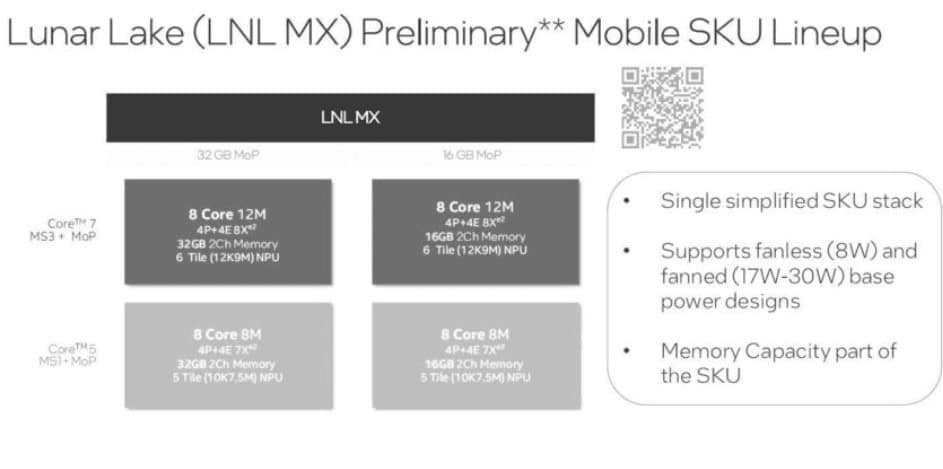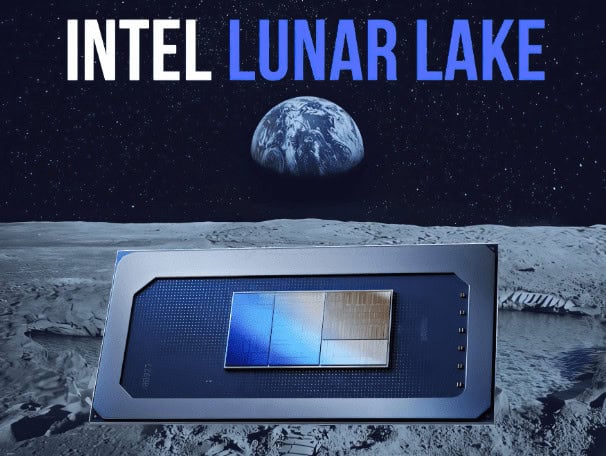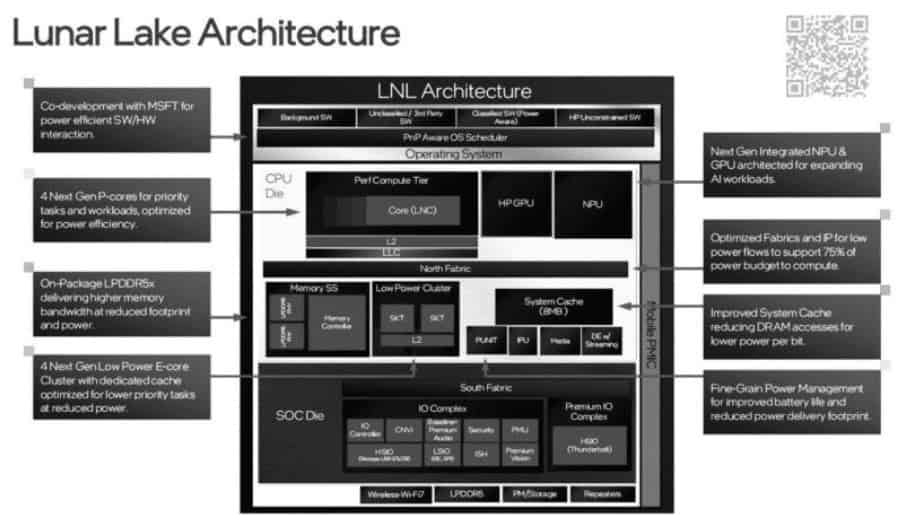According to recently surfaced official slides from the company, initially leaked by YuuKi_AnS and later obtained by Anandtech forum member Geddagod, details about the upcoming next-generation lower power architecture have been revealed. Lunar Lake-MX is slated to replace the yet-to-be-released Meteor Lake-U variants, as it is designed for a thermal design power (TDP) range spanning from 8W to 30W.

More About the Intel Lunar Lake-MX Lineup
This disclosure of Intel’s official slides is significant, considering Lunar Lake’s anticipated release is not in the immediate future. Intel has reportedly collaborated with Microsoft to create an energy-efficient and industry-capable end product. Lunar Lake-MX is set to feature a state-of-the-art dedicated Neural Processing Unit (NPU 4.0), a long-rumored component seen as a notable breakthrough for the AI industry, particularly with the increasing prevalence of generative AI applications.
Beyond introducing a next-gen Visual Processing Unit (VPU), Lunar Lake-MX will pioneer the transition to Battlemage architectures, denoted as “Xe2-LPG” graphics. This series is anticipated to incorporate 8 Xe-Cores, potentially establishing new benchmarks for graphics compute performance and representing a generational leap from the preceding Arc architecture. The Lunar Lake lineup is slated to support up to dual-channel LPDDR5X-8533 on-package memory, a move intended to optimize power consumption and respective die sizes.

Expanding on the Battlemage architecture, Lunar Lake-MX will integrate 64 Vector Engines with Systolic AI/Super Scaling technologies, offering real-time ray tracing capabilities. Xe2-LPG is expected to support DisplayPort 1.4, HDMI 2.1, and eDP1.4 & 1.5, along with hardware-based VVC/H.266 video decoding. In terms of onboard memory, the CPU tile will be available with on-package memory configurations of 16 GB and 32 GB, reflecting Intel’s intention to release multiple variants with diverse CPU and GPU core configurations. By combining Lion Cove and Skymont cores, Intel aims to deliver exceptional performance despite the lineup’s power limitations.
Lunar Lake-MX SKUs are designed to cater to a broader consumer base, with the 8W model reportedly capable of operating without any cooling solution. The higher-end variants are expected to operate within the 17W to 30W TDP range, and the slides suggest that the peak Battlemage performance could reach up to 3.8 TFLOPS, equivalent to Apple’s M2 SoC. In terms of industry competitiveness, Lunar Lake-MX CPUs could represent a significant milestone in the mobile industry, particularly due to the expected substantial generational advancements.

While the release date for the Lunar Lake-MX series has not been announced, it is anticipated to be available in 2024. The lineup’s performance, especially concerning the improvements brought by the Battlemage architecture in graphics performance, will be closely watched against existing offerings in the market.







